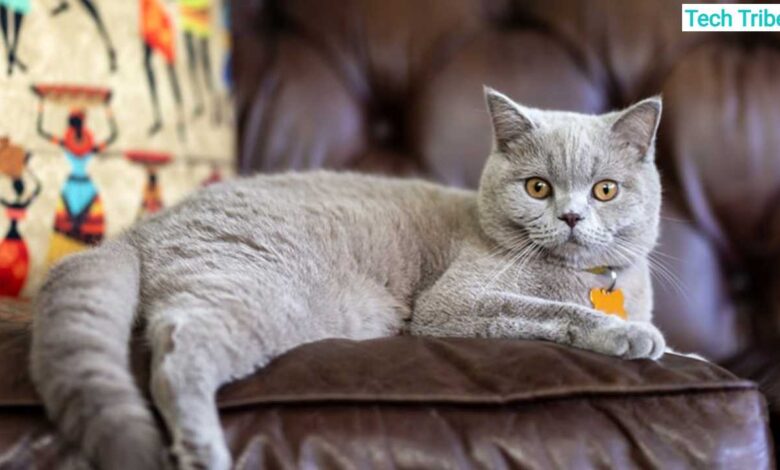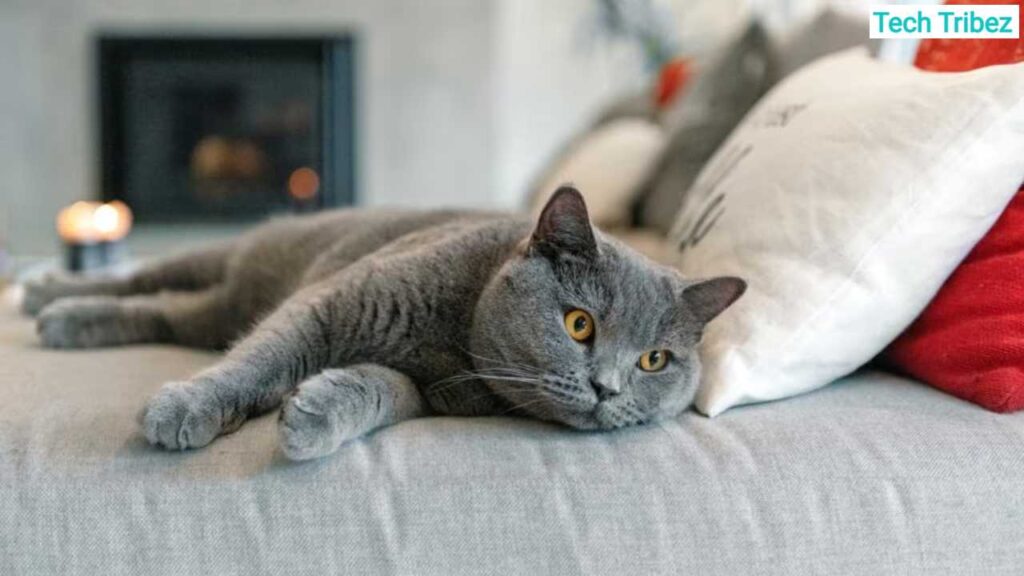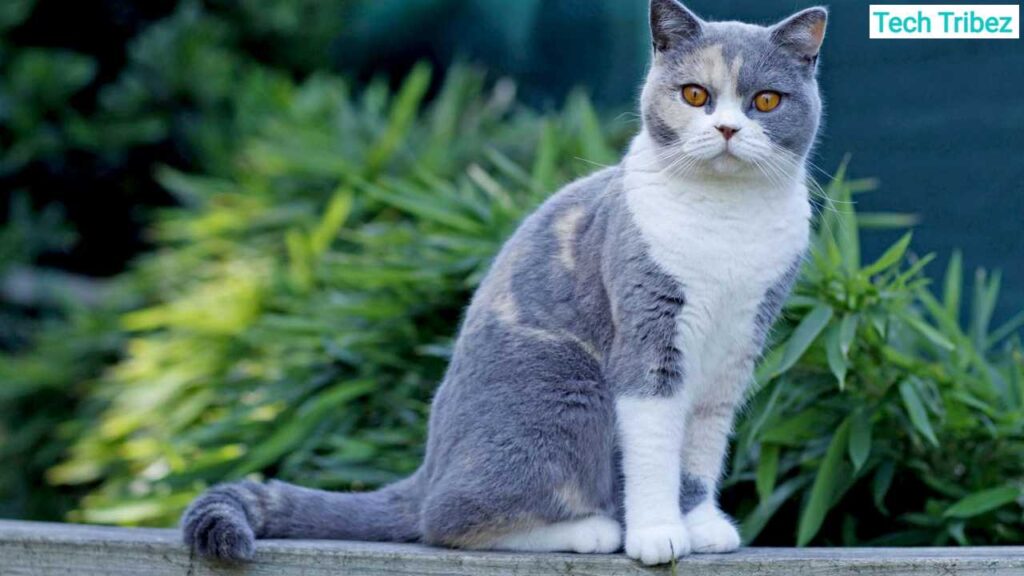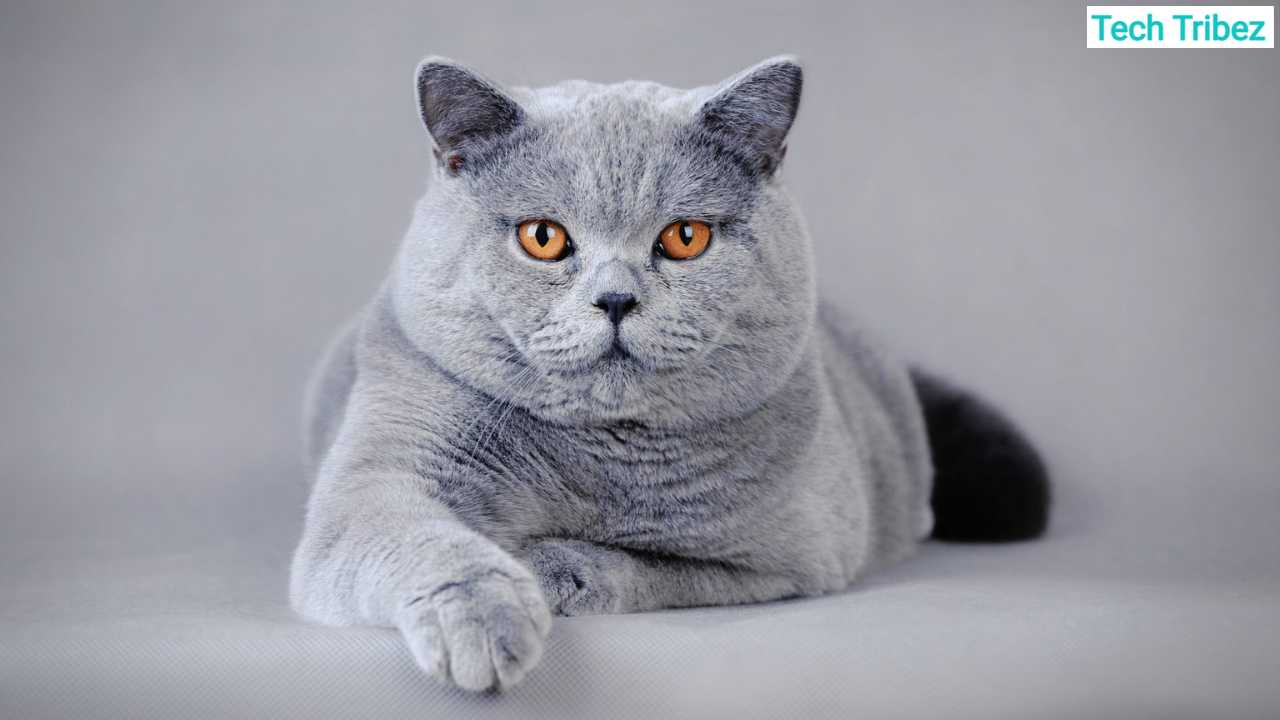Why British Shorthair Cats Are the Perfect Family Pet?

The British Shorthair cat has been increasingly popular over the years because the cat is docile, cute to look at, and requires little attention compared to the other cats. British shorthair cats have round faces resembling a teddy bear and thick fur. They are amiable animals, making them suitable for families, individuals, or senior citizens to pet.
They are very friendly, and friendly temperaments could be attributed to their compatibility with people who would love to have a cat that is both playful and affectionate at the same time. The British Shorthair is not needy – it likes to stay near to its owners, watch their movements, and accompany them at home without being too demanding of attention being paid to it.
This makes them suitable for families or individuals keen on having a feline friend besides not being bound to stick around the house most of their time or not interested in owning a clingy cat, as they are familiar with some of the most popular breeds. Moreover, they are calm and tolerant cats, so they can easily be adjusted to different environments, such as an apartment or a home with other cats or other kinds of pets, making the British Shorthair‘s choice versatile for many.
What Are the Key Characteristics of British Shorthair Cats?
British Shorthair cats are average to big-sized with muscular and sturdy body structures, round faces, and large round eyes that could bring them a toyish look. A short, muscular body and short, dense coat are available in many color variations ranging from blue to white, with the British Blue being famous worldwide. They also have a calm and easygoing nature, making them great company for the family. They are friendly cats and do not require much attention; they are happy to spend time with their masters, but they will amuse themselves if left alone.
These are playful and intelligent dogs. However, they are not as energetic as some of the other breeds. For this reason, they will suit those families that need an active pet but not exceptionally so most of the time. These cats are also known to be less vocal, which means your Britsh Shorthair cat will not be making a lot of noise, which is good news for those who do not like noise-making cats.
Why Do British Shorthair Cats Have Such a Distinctive Appearance?
The cat breed has a characteristic appearance that many appreciate, making them stand out among other breeds. Cats of this breed have a round head, chubby cheeks, short, thick fur, and, altogether, they look more like teddy bears. This look is, however, not due to their genetic makeup alone but rather centuries of breeding in an attempt to cause enhancements to their genetics.
Original British Shorthairs were feral cats that lived in Great Britain. They were muscular and had thick fur that would be useful when living in cold conditions. They began to improve their looks, and the breeders have a standard they follow today: round head, large eyes, and stocky body. They have dense coats, usually blue-grey, although they can be found in many other colors, and the coat is very soft to the touch, making them very cute.
Thankfully, it is not double-layered or woolly, so it is considerably easier to groom than similar-thickness British Shorthair breeds. These features significantly contribute to what is known about the breed and help identify these cats as different in the world of felines.
When Did the British Shorthair Breed Originate, and How Has It Evolved?
The British Shorthair is a recessive breed, regarded as the oldest cat breed in Great Britain, with evidence of its origin being as old as Roman times. It is recorded that the breed descended from domestic cats imported to the UK by Roman soldiers and then crossed with local ‘tigers.’
Tyrants of Cornwall: Over the centuries, these cats became accustomed to the British weather and thus were equipped with thick fur coats and more muscular body structures. In the Victorian period, the breeders worked on forming the presentations of the British Shorthair. They mated them with Persians and other breeds to improve their features and beautiful, dense coats.
During the late nineteenth century, the British Shorthair was well established, and the cat was used in shows and was considered to be of friendly demeanor and unique looks. They came perilously close to being eliminated during the World Wars because of food problems and a mix with other cat breeds.
But, selective breeders were ever so hardcore to bring the British Shorthair breed back to life, and by the 1950s, the breed regained its standing. Today, British Shorthair is an internationally well-known breed that is appreciated not only for its antique line age and characteristics but also for its
What Makes British Shorthair Cats Ideal for Families with Children?
The British Shorthair cats are another breed that will work perfectly in families with children, as they are tolerant and flexible. British Shorthair kittens, for instance, may be shy or easily irritated by the presence of young children, which does not apply to this breed. They are not known to be lap cats, which more or less makes them immune from getting stressed out by the noisy activities exhibited by children.

They like to remain close by, watching the goings-on without actually getting involved in any of the happenings. British shorthairs are also known to be much more robust than Siamese cats, making them less vulnerable to being injured by the hands of a toddler or a similar-age child now and then. Besides, unlike other types of pets, they require little or no interaction with people, making them ideal pets for large and chaotic families. Their loving but distant demeanor indicates that they will desire attention according to their standards, allowing companionship without the nuisances.
Why Is Grooming a British Shorthair Cat So Simple and Effective?
British Shorthair cats, as a rule, do not require complex grooming. Thus, the cats of this breed are perfect for those who want to avoid complicated grooming procedures. This breed does not create an easy tangle coat whereby you may need regular grooming, but it only needs to be brushed once a week.
This bare, minimal grooming is helpful in the removal of loose hair as well as cutting down on shedding, significantly if, in a particular season, the coat has changed and is shedding. In contrast with long-haired cats, the British Shorthair does not need frequent washings and grooming from experts, hence saving time and money from the owner’s side. Besides, due to the absence of an undercoat, British Shorthairs do not have a problem with the tangles that affect most other cats with soft and fluffy hair.
Bathing them, combing their hair, exercising them, feeding them properly, trimming their nails, cleaning their ears, and checking their teeth are routine care they need besides grooming. This implies that they are easy to care for since the owner does not have to groom them much, making them perfect for any cat lover who doesn’t want to spend much time doing so.
What Health Issues Should You Be Aware of with British Shorthair Cats?
Although this breed is relatively healthy and hardy, some health concerns are associated with British Shorthair cats that an owner should know. The disease mentioned often in Scottish Combs and British Shorthairs is hypertrophic cardiomyopathy, which affects the heart muscle. This condition can be well controlled through proper veterinary check-ups and early exposure.
The following health problem is obesity because these cats are inclined to be overweight if the feeding and exercise regimes are not controlled. This breed loves food and, often with low activity levels, can gain weight coupled with other diseases such as diabetes and arthritis. They are also prone to dental diseases and should usually have their teeth brushed and taken for professional cleaning. With good care, a nutritious, balanced diet, and routine check with the vet, British Shorthairs are comparatively free from many diseases and can live a long, healthy life.
Why Do British Shorthair Cats Have Such a Long Lifespan?
The breed is robust and healthy and can live between 12 to 16 years depending on how well it is being taken care of and, in some cases, may live longer. This longevity is attributed to the diverse genes found in this breed that have also contributed to the dog’s health conditions. Unlike other breeds of cats, the British Shorthair has few inherited diseases to contend with, and genetic disorders that are seen in most cat breeds are absent in this type of cat.

The koshinage are also calm, and most of them lead almost a sedentary lifestyle; they are also not keen on reckless activities that can lead to disasters or other accidents. However, for them to live longer lives, British Shorthair cats need to be fed well, exercised adequately to minimize obesity, and also to get to a vet for checkups for any health-related issues. The cat’s major boosters and routine care, like vaccinations for common diseases, fleas, parasites, and dental checks, are crucial in getting these cats to live healthy lives.
What Are the Best Diet and Nutrition Tips for British Shorthair Cats?
The food choices made on behalf of the cats are vital to ensuring that the cats are healthy and well-nourished. One must know that these cats tend to become overweight, so the proper nutrients must be offered, but without saturated fats or other foods that would add unwanted pounds. British Shorthairs feed them the best cat food with more protein and minimal carbohydrate content.
Free feeding is discouraged as these cats can eat their fill anytime and require control to avoid over-feeding. The way they have rationed portions at least and are prevented from taking large meals throughout the day, which would make them obese. Treats should also not be given in large volumes or any foodstuff considered unique for human consumption as this may lead to obesity due to the combustion consumption of food.
Having a word with a vet about your cat’s diet is an excellent way to ensure it is eating the right portion of food suitable for its age, weight, and activity levels. Also, constant clean drinking water should be made available since water is essential to the health of animals. If it is not supplied adequately, it may lead to several urinary problems.
Why Is a British Shorthair Cat a Low-Maintenance and Affectionate Companion?
British shorthair cats are generally considered easy to groom and friendly to their owners; hence, they are preferred by most people. They are independent loving however they can adjust life in a house or apartment and respond to its activity with different energy levels whether the home is active or calm. In one way or another, they are comfortable with their share of attention and are not necessarily needy like some breeds that require their owner’s company all the time.

They prefer living close to their humans; you will always catch them moving from one room to another, providing solace without disturbing anyone. Most of them require little grooming and are seldom sick, which lowers the time needed to spend with them. These dogs are not hard to maintain or train; they do not bark much but are very friendly and playful; thus, they are perfect for people who want a pet that will spend most of its time independently but will still offer affection when needed.
Conclusion
British Shorthair cats are the most suitable types of cats to be taken as pets in any home since they are independent, affectionate, and low maintenance. From their appearance, they have thick fur and cute faces similar to teddy bears; enthusiasts specifically feel them. One more simple and unpretentious character of the breed makes it the perfect choice for families with children, singles, and seniors since the breed does not require constant attention from its owner.
The British Shorthair is a remarkably healthy breed; they live longer and suffer from little or no inherited diseases common with most feline breeds, making it a worthy investment in having a pet. Besides the health issues and ability to adapt to new homes, the grooming requirement of their fur also contributes to their popularity, making them among the most famous cat breeds.
Thus, this breed’s various features, necessary care, and health considerations are essential for any potential owner of the lovely British Shorthair breed to know. So, if you get a new kitten or decide which breed to get as a new pet, the British Shorthair is one adorable breed with qualities that will make you enjoy its companionship.
(FAQs)
Are British Shorthair cats good for first-time pet owners?
Yes, British Shorthair cats will be the best for first-time pet owners to keep as their pets. It is helpful, self-sufficient, and less aggressive creatures, making it easier to deal with them. Their grooming requirements are shallow, and they are relatively healthy animals with few hereditary diseases, which makes the responsibilities of owning pets low.
Do British Shorthair cats get along with other pets?
The personality of British Shorthair Britain is quite friendly and unemotional; thus, the cats are comfortable in the company of other animals, even dogs and cats. They are tenant-friendly and compatible with other animals if proper introductions are made correctly and without haste.
How often should I groom my British Shorthair cat?
Miniature or toy cat breeds such as the British Shorthair are suitable for families since they have short coats that only need occasional grooming. A weekly brushing may be enough to remove loose hair and maintain its smooth coat. In shedding seasons, you might have to comb them more often to minimize the amount of hair that falls off.
Are British Shorthair cats hypoallergenic?
That’s incorrect. British Shorthair cats are not hypoallergenic in any way. Like other cats, they produce allergens, mainly in saliva, skin, and dander. Despite having a short fur coat, though they shed less than long-coated breeds, they cause allergies to people with sensitive skin.
How much exercise do British Shorthair cats need?
These cats only engage in moderate activity and need no vigorous physical activity. They like to play games such as chasing feathers or using catnip mice with their partners. To keep them active and healthy, it is necessary to offer 2-3 playing sessions per day and equip the cats with climbing trees or scratching posts.
What are the common health problems in British Shorthair cats?
British Shorthair cats are rarely sick. However, some diseases are inherent to this breed, such as Hypertrophic cardiomyopathy (HCM), obesity, and dental disease. These risks can, however, be negotiated by ensuring the pet goes for regular veterinary check-ups, is fed a balanced diet, and does not become overweight.
How long do British Shorthair cats typically live?
British Shorthair cats are pretty healthy, with a life span of 12-16 years, though some may live longer if they are well cared for. One part of them is long-living, which is why it is their choice for families and people who want to find a long-suffering companion.
Do British Shorthair cats like to be held and cuddled?
British Shorthair cats are friendly, and while they may enjoy being around their owners, they do not usually enjoy being petted or picked up. They are not lap cats and normally do not like to be on you; instead, they love to be beside you. Pugs are receptive to attention, and they also want to be cuddled. They will show affection in a more muted manner.
What should I feed my British Shorthair cat?
As with any breed, it is recommended that British Shorthairs feed on a nutritional diet consisting of high-protein foods and very few carbohydrates. The food must be specially formulated for cats. They contain a lot of calories, so it should be ensured that their portion size does not cause obesity. Speaking to a veterinarian is the best way to determine nutritional requirements unique to your cat’s age, weight, and health status.
Where can I adopt or buy a British Shorthair cat?
British Shorthair cats are available from rescue centers, animal adoption agencies, or breeders. Thus, it is recommended that you read about the specific breed, its breeder’s codes of ethics, and the health and socialization of kittens before making a decision. You can also visit cat shows to get acquainted with the breeders and gain more information concerning the breed before making a decision.



